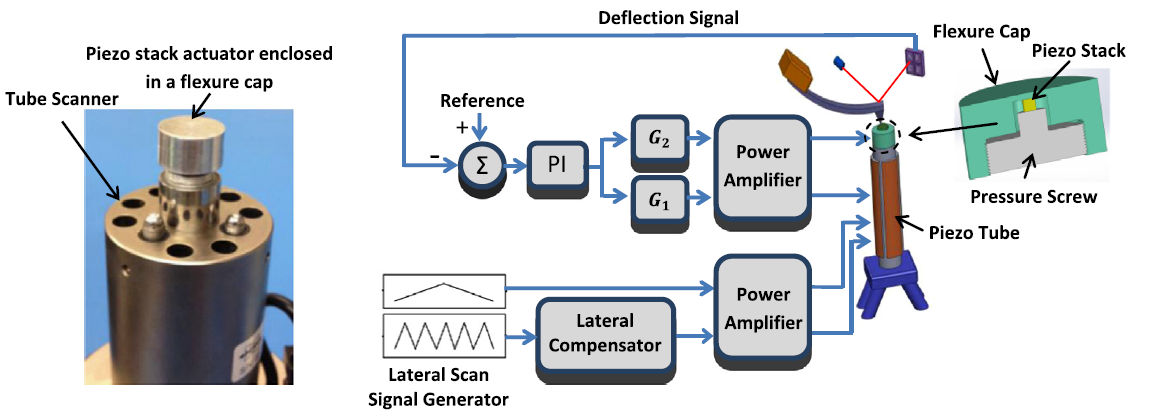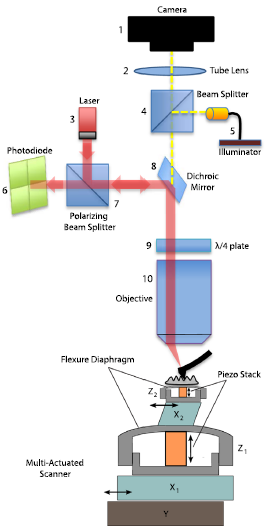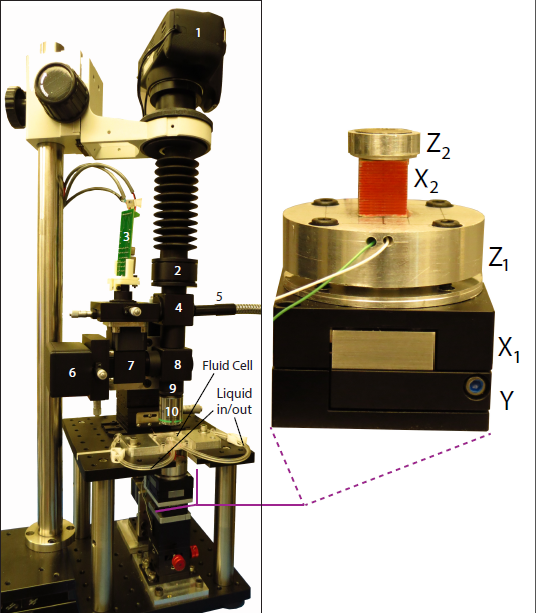
Atomic force microscope(AFM) is a powerful and versatile instrument with a wide variety of applications ranging from imaging and nano-manipulation to characterizing mechanical properties of various types of samples. The speed limitations of this device however, have constrained its capabilities. In this research we develop controls, instrumentation and signal processing techniques to achieve ultra-high imaging speed for AFM and unlock its true ability. The new possibilities made available through the contributions of this research will be explored in areas such as materials, and biological sciences.
See our latest work on the design of a high-speed large-range atomic force microscope. This work is highlighted in Boston Globe and MIT-news.
Left: A schematic view of the designed AFM and Right: the AFM setup with a close-up view of the multi-actuated scanner. Various components are labeled/numbered similarly in (a) and (b). The scanner is composed of a (from top to bottom) (1)fast/short-range out-of-plane actuator (Z2), (2) fast/short-range lateral positioner (X2) for raster
scan, (3) slow/large-range out-of-plane actuator (Z1), (4) slow/large-range lateral actuator (X1) for raster scan,and (5) slow/large-range lateral actuator for frameup/down motion (Y).
Click on each item to see the corresponding AFM videos of calcite etching captured with this AFM setup: showing layer by layer removal of calcite terraces, deep pit formation and mono layer dissolution.
Multi-actuation can also be used to retroactively enhance existing AFM setups. See our paper on this approach here.
 The above figure shows an AS-130NM tube scanner with 130 µm lateral and 5 µm vertical range. This figure also shows an additional high-speed piezo flexure actuator mounted on top (left). On the right you can see the schematics of the experimental setup.
The above figure shows an AS-130NM tube scanner with 130 µm lateral and 5 µm vertical range. This figure also shows an additional high-speed piezo flexure actuator mounted on top (left). On the right you can see the schematics of the experimental setup.

